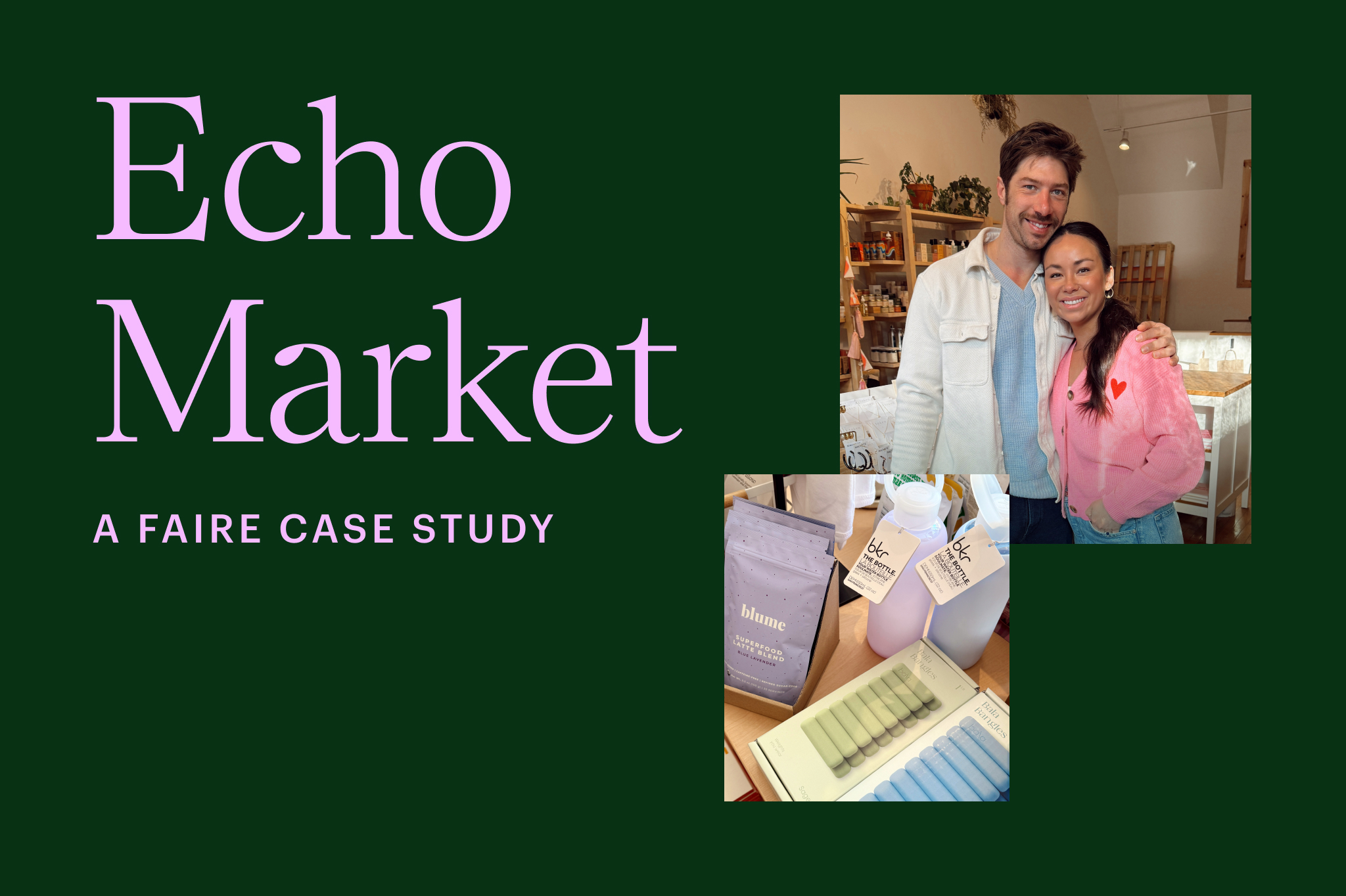

As a business owner, you’re likely inundated with numbers and data points every day, and many of these are referred to as KPIs in the retail industry. KPIs, or key performance indicators, are the most essential data points that your business should be monitoring on a regular basis. Whether you operate a brick-and-mortar or an e-commerce shop, KPIs can reveal where your business has been and where it’s going.
Depending on the type of business you own, there are various KPIs you can use to track performance. To get you started, we’ll go over 10 of the most commonly used KPIs and provide real-world examples of how to use them.
What is a KPI?
KPIs are quantifiable retail metrics that can be used to show how your business is performing. Think of them as a report card for your retail business. Business owners closely review KPIs on a regular basis to determine whether they’re meeting their goals or falling behind. For retail businesses, there are certain KPIs that are going to be more relevant than others. Many of these are also defined in our retailer’s glossary of 40 terms to know if you’re opening a store.
Why are retail KPIs important?
A retail business can have countless moving parts, and without paying attention to these key retail performance indicators, you’ll have no idea where your business might be faltering. Tracking KPIs can ensure that you catch small problems before they become big problems. It can clue you in to important patterns in your business such as when you should hire additional staff, increase inventory, or liquidate stock with a sale.
What KPIs should you measure?
The first step is understanding which specific KPIs matter most for your business. There are hundreds of metrics you could measure, so it’s important to prioritize the right ones—only a handful might be applicable to your retail shop specifically. For example, unless you have some type of subscription or membership model, you don’t need to worry about annual recurring revenue. And unless you’re doing a major public relations push, you likely don’t need to look at media impressions.
Even small retail businesses can process hundreds of transactions per day, resulting in a mountain of retail KPIs to assess. Since retailers can’t go through every data point manually, many rely on software. Depending on your business, you should be able to use point-of-sale (POS) software to automate and streamline much of your data reporting. Tools like Shopify, Square, and Clover can not only help you make sales but also track finances and inventory.
Common retail KPIs
The KPIs that matter most can differ from business to business. It depends on your product niche, your business objectives, and your target audience. That said, here are 10 popular retail KPIs that you’ll want to know.
1. Conversion rate
Why it matters:
Retail businesses often treat the conversion rate as the north-star metric, as it can indicate whether your branding, pricing, and/or merchandising strategy is effective.
What it is:
This is likely the most universal retail KPI that you should be familiar with, especially if you’re focused on the e-commerce space. Your conversion rate looks at the number of people who come to your website or walk into your store versus the number of people who actually make a purchase. In other words, how many of those browsers actually become customers?
This KPI is represented as a percentage and calculated by taking the total number of conversions/purchases, dividing it by the number of visitors/interactions, and then multiplying that number by 100. So, let’s say that 1,000 people visit your store in a month and 120 of them make a purchase. Your conversion rate for that month would then be (120 / 1,000) x 100 = 12%.
2. Average transaction value
Why it matters:
Average transaction value is important because it can help you improve your merchandising strategy or pricing strategy to make your business more profitable.
What it is:
This retail KPI—also sometimes referred to as an average order value—points to how much money customers spend on average when they make a transaction in your store or complete an online checkout. A high average order value can mean that customers are either choosing pricier items or simply buying more items in a single transaction.
Average transaction value is calculated by taking the total value of your sales and dividing it by the number of transactions. For example, if your shop generates $20,000 in sales from 250 transactions, your average transaction value would be $20,000 / 250 = $80.
3. Traffic
Why it matters:
By tracking this KPI, retail store owners can develop and improve their marketing strategies to make sure more shoppers find their web store or brick-and-mortar.
What it is:
How do you know if your marketing is effective or if people have an awareness of your brand? You monitor traffic, whether that’s web traffic or foot traffic. Traffic can tell you whether shoppers are finding your brand, and web traffic specifically can tell you how people are finding your brand. For example, if an influencer shared a viral post featuring your product or if an email campaign resonated with people, web traffic data can reveal that.
You can measure this KPI for a digital storefront through analytics software like Google Analytics. For a physical storefront, you can analyze store video footage for a given time period. The average number of visitors can vary widely depending on your niche and many other factors, but for a small business, anywhere from 1,000 to 10,000 unique visitors would be considered “average.”
4. Customer retention
Why it matters:
This is the most important KPI when it comes to strengthening long-term customer relationships and ensuring a bright future for your business.
What it is:
Customer retention is a retail KPI that measures your ability to foster loyalty in your customers. A customer who buys something once is good, but a customer who keeps coming back is much more valuable. An increase in your retention rate can point to powerful branding, effective pricing, or just a really great product.
You can measure customer retention by taking the number of customers at the end of a time period, let’s say a month, and subtracting the number of new customers gained in that time. You then divide that number by the number of customers you had at the beginning of the month and multiply by 100. So, if you had 1,000 customers at the end of a month and also started the month with 1,000, but 100 of those customers were new, then you have a retention rate of 90%.
5. Sales per square foot
Why it matters:
Breaking down your sales into a per-foot metric can reveal which areas in your brick-and-mortar shop are popular with customers. This can ultimately inform your merchandising strategy and how you arrange items in the space you have available.
What it is:
Retailers use this KPI to measure the effectiveness of their retail space. A low number of sales per square foot for your overall store could mean your layout isn’t optimized or that you have too large of a space for the merchandise you’re selling. If the sales per square foot are lower in a certain part of your store, then you should either stock less of the merchandise in that section or experiment with moving things around.
Sales per square foot is measured by dividing the total net sales from a given time period by the square footage of your store. So, if your 1,000-square-foot shop sells $400,000 worth of merchandise during a sales quarter, your sales per square foot for that quarter would be $400,000 / 1,000 = $400 per square foot.
6. Return rate
Why it matters:
Return rate matters because it can help you determine which products customers tend to love and which products are disappointing too many people after the initial purchase.
What it is:
Your return rate is a percentage that represents how often customers return your products in exchange for a refund or a replacement. Naturally, you want this to be as low as you can get it. A high return rate could indicate an inferior product or misleading marketing, so it’s important to act fast and make some strategic changes if you see this happening.
To determine your return rate, simply divide the amount of goods returned by the amount of goods sold. The average return rate for the retail industry hovers just below 17%, according to the National Retail Federation.
7. Inventory turnover rate
Why it matters:
Retailers watch this KPI to know which items are moving quickly and which ones they should stock less of or stop selling completely.
What it is:
Inventory turnover is the rate at which inventory turns over, or the rate at which customers buy your products. Inventory turnover rate differs slightly from a sell-through rate, which is the total amount of inventory sold versus the amount you bought from your wholesaler. A lower inventory turnover rate might mean that a particular stock-keeping unit, or SKU, is not selling quickly or is no longer in demand, while a higher number might mean you aren’t keeping up with demand.
To calculate the inventory turnover rate, take the cost of goods sold and divide it by the average inventory. For example, if your cost of goods sold during a given month was $45,000 and your average inventory was worth $15,000. That would mean your inventory turnover rate was 3, i.e., you turned over your inventory three times that month.
8. GMROI
Why it matters:
GMROI can help you make important business decisions, such as whether you should spend less on inventory, charge more for inventory, reduce inventory levels to avoid overstock, or focus more or less on certain products.
What it is:
Gross margin return on investment, or GMROI tells you how much you earned in profit for every dollar you invested in inventory for your store. This KPI doesn’t only tell you whether inventory is profitable or not—it gives you a metric to see if a specific product is bringing in above-average or below-average returns.
To calculate GMROI for a sales year, you first need to determine the gross profit (difference between revenue and cost of goods sold) and the average cost of inventory for that year (i.e., the cost of inventory at the start of each month plus the cost of inventory from the last month of the year divided by 13). Then divide the gross profit by the average cost of inventory for the year.
So, let’s say your business brought in $1,000,000 in revenue during the sales year, your cost of goods sold was $450,000, and your average cost of inventory was $250,000. The gross profit would then be $550,000, and the GMROI would be $550,000 / $250,000 = $2.20, which means your inventory brought in $2.20 of profit per dollar spent (on average).
9. Net profit
Why it matters:
Simply put, net profit is the best retail KPI for determining whether your business is profitable or not.
What it is:
You can look at net profit at the aggregate level to see if your brand is profitable, but it’s smart to dive deep and examine profit at the individual product level as well. Maybe your brand is currently not profitable, but you notice a certain product is extremely profitable. That could be your sign to double down on that product line. Net profit shouldn’t be confused with gross profit, which only subtracts the cost of goods from your revenue.
Net profit is determined by taking your total sales revenue and subtracting the cost of goods sold along with all other expenses related to running your business, including taxes and operational overhead. So, if your net profit for a given time period was $500,000, your cost of goods sold was $200,000, and your other operating expenses (rent, taxes, employee salaries, marketing expenses, etc.) came to $150,000, your net profit would be $150,000 for that time period.
You can look at net profit from year-to-year and month-to-month to discover the buying patterns of your customers.
10. Yearly growth
Why it matters:
Retailers use yearly growth figures to see how their business expands over long periods of time.
What it is:
Year-over-year growth, sometimes shortened to YoY growth, looks at how a metric has progressed in the past 12 months. Year-over-year measurements can be applied to any retail KPI such as revenue, conversions, or traffic.
To calculate yearly growth, subtract the previous year’s revenue from the current year’s revenue to get the total change in revenue, then divide that result by the previous year’s revenue and multiply that number by 100. For example, if you did $400,000 in sales this year but $250,000 last year, your YoY growth rate for sales is 60%.
Retail KPI examples: Which metric should you use?
If you want to boost sales:
To boost sales, you’ll want to use a KPI like average transaction value to see which products to focus sales efforts on and how to maximize profits for those items. While there are lots of ways to go about this, you might consider stocking up on popular point-of-purchase gifts by the register, increasing the average value of goods, offering gift-wrapping services in your store at an additional charge, or setting up promotions like buy two / get one 50% off. Any or all of these options should incentivize shoppers to spend a little extra each time they visit your store.
If you want to increase customer satisfaction, loyalty, and retention:
If you’re laser-focused on customer service, try a more specific KPI surrounding any new loyalty programs you’ve tried, such as loyalty program sign-ups. Once you create a program, there are many channels to get the word out. In-store, you can offer a small discount to get shoppers in the door and give them the opportunity to sign up for your loyalty program at the register. Also be sure to promote it on your website, through social media channels, and in your newsletters. Then track the sign-up data and see how your efforts are paying off.
If you want to make sure your brick-and-mortar space is cost-effective:
To see if the physical space of your retail shop is worth the mortgage or rental fee, use the KPI sales per square foot. If you’re very efficient, maybe it’s time to expand; if you’re losing money due to skyrocketing rent, maybe it’s time to try an e-commerce model.
Take a good look at your store. Where can you improve the set-up? Is there an area where you could add a bookshelf with accessories without over-cluttering the space? You may just discover that there’s a lot you can do to increase incremental sales, no matter the size of your shop.
Best KPIs for an e-commerce shop:
Conversion rate is going to be most important if you run an e-commerce shop, as this tells you how many visitors to your website actually make a purchase. Traffic is important, of course, but if people are just visiting or placing items in their shopping cart and abandoning them, you’re not profiting from those visits. Your average transaction value is also important, as this tells you how much customers are spending when they shop. Customer retention rate is another essential retail metric for e-commerce shops since you always want to keep loyal customers coming back even as you continue to put effort into acquiring new customers.
Best KPIs for a brick-and-mortar:
Your sales per square foot and traffic are very important if you run a brick-and-mortar since this will help you refine the physical layout of your store to maximize revenue and productivity. Inventory turnover is particularly important for brick-and-mortars as well since you likely don’t have a lot of extra storage space for inventory that isn’t selling.
Just like e-commerce business owners, brick-and-mortar retailers also want to heavily consider their conversion rate, average transaction value, and customer retention rate to make sure people aren’t just coming in to browse, only making tiny purchases, or coming in once and never returning. Ideally, you want loyal customers who return and make sizable purchases time and time again.
How often should you do reporting and how should you report?
The ideal frequency and method of reporting on your retail KPIs will depend on factors such as the size of your business, how long you’ve been operating, what you sell, and whether you have multiple locations or websites. However, it’s safe to say that a schedule of weekly, monthly, and quarterly reporting is in your best interest. Before setting up such a schedule, determine which KPIs are most important for your business, set clear goals for what you want to achieve in those areas, and be ready to adjust as needed.
There are some KPIs, such as customer retention rate, that you can report on less frequently to get a bigger picture of the data.However, some other KPIs should be reported on much more frequently. For example, web traffic can be an essential daily metric for e-commerce shops.
Tools for reporting:
Whether you’re operating a brick-and-mortar or an e-commerce shop, there are various tools you can use to report on your KPIs. Dedicated KPI tracking platforms such as Klipfolio and Domo help you monitor and report on your essential metrics from a central dashboard, data visualization platforms such as Microsoft’s Power BI and Google Looker Studio help you view and analyze your data more effectively, and many of the project management tools that you might already be using include KPI tools as well.
Final thoughts
You can’t manage what you don’t measure. If you want to maintain or grow your retail business, it’s crucial to track your progress against your goals. Retail KPIs help you do this. The common retail KPIs mentioned above are a great place to start when it comes to understanding the performance of your retail business.
Are you a new retailer? Read more about Open with Faire and learn how to apply for up to $20,000, with 60-day payment terms, to stock your new shop.




